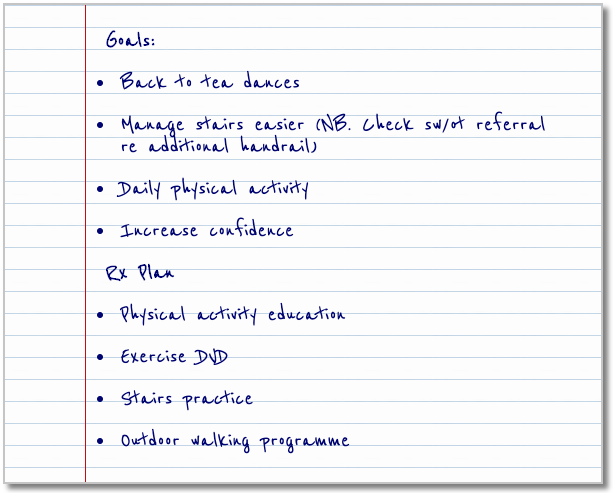Following their discussion Jean knows that the CR physiotherapist has an understanding of her individual situation. The CR physiotherapist has used a menu based approach and has offered Jean a home based activity program. The cardiac rehabilitation physiotherapist supports Jean using an activity DVD he has brought along.


Goals:
- Back to tea dances
- Manage stairs easier (NB. Check sw/ot referral re additional handrail)
- Daily physical activity
- Increase confidence
Rx Plan
- Physical activity education
- Exercise DVD
- Stairs practice
- Outdoor walking programme
Pulse point
Although social isolation is most common in the elderly, younger adults (eg, housebound and disabled due to multiple sclerosis or a single mother of young children) may also be affected by both social isolation and loneliness. Reduced social contact, being alone, isolation and feelings of loneliness are associated with reduced quality of life. Loneliness refers to how individuals evaluate their level and quality of social contact. Social isolation can be more accurately measured (eg, by the number of social contacts the person has). Well-being may not be positively correlated with social contact and a great deal depends on the nature of the contacts made. For some people, solitude is a way of life which temperamentally suits them and they may not feel lonely even if they have no visitors. Consider loneliness in any isolated person, especially the housebound. Possible signs of loneliness include:
- Verbal outpouring
- Prolonged holding of your hand or arm
- Body language: defeated demeanour, tightly crossed arms and legs
- Drab clothing
Page last reviewed: 27 Jul 2020


